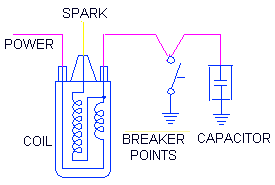

ALL Aboard 2!
September 22, 2018
 Back by Popular demand! Saturday September 22nd. Bob and I have planned a repeat of last year’s tour to the Illinois Railway Museum. Back by Popular demand! Saturday September 22nd. Bob and I have planned a repeat of last year’s tour to the Illinois Railway Museum.
 This will be a fairly short drive to the museum via a number of country roads. We’ll meet at the Meijer Foods (815 S. Randall Rd. Elgin) parking lot near the Starbucks coffee house. Meeting time is 10 am with the drivers meeting at 10:30am. Lunch will be available at the museum in their Dinner (cafeteria). They offer burgers, Hot dogs, BBQ beef, and Chicken sandwiches. Since the museum is a non-for-profit I suggest we buy our lunch there to help support the museum. This will be a fairly short drive to the museum via a number of country roads. We’ll meet at the Meijer Foods (815 S. Randall Rd. Elgin) parking lot near the Starbucks coffee house. Meeting time is 10 am with the drivers meeting at 10:30am. Lunch will be available at the museum in their Dinner (cafeteria). They offer burgers, Hot dogs, BBQ beef, and Chicken sandwiches. Since the museum is a non-for-profit I suggest we buy our lunch there to help support the museum.
 I expect the drive to take about an hour. Admission to the museum is $10.00 per person. We will be allowed to park our cars inside the museum grounds. The museum will be open until 5pm. So we should have lots of time to explore the exhibits and ride the trains. We hope that they will still have the steam train running this year. I expect the drive to take about an hour. Admission to the museum is $10.00 per person. We will be allowed to park our cars inside the museum grounds. The museum will be open until 5pm. So we should have lots of time to explore the exhibits and ride the trains. We hope that they will still have the steam train running this year.
~~ Jim Compton & Bob Dorley
|


 IGNITION COIL POLARITY - IG-104
IGNITION COIL POLARITY - IG-104
Editor’s Note:
Ever wonder why the ignition coil is marked with a (+) and (-) terminals but there is no description in schematics or technical documentation explaining which lead goes where? This article written by Barney Gaylord sheds some light on this phenomenon.
There is some misconception about ignition coil polarity and how important it may be (or not). For most people it is only a matter of lack of knowledge, perhaps followed by getting some bad information. How the coil works (with points and condenser) to create a high voltage spark is covered in another article. This article is a discussion about electrical polarity of the coil and spark plugs.
 Ignition coil circuit diagram The ignition coil is essentially a low voltage to high voltage transformer with about 100 to 1 ratio of windings and voltage. The coil case is not grounded, and both primary and secondary windings inside are "floating" or isolated from the case. The only thing the windings have in common is one end connected to the same primary terminal, and it really doesn't matter much which one. Being a transformer it must have pulsating or alternating current to work. Initial pulsating is done by connecting and disconnecting the primary circuit ground connection. Alternating current then comes into the function in a big way by electrical "ringing" in the condenser at very high frequency. A transformer is not affected by polarity, since it is an alternating current device, so it matters not to the transformer what the input or output polarity may be. Any polarity on the primary side and any polarity on high tension side will produce the same quality of spark.
Ignition coil circuit diagram The ignition coil is essentially a low voltage to high voltage transformer with about 100 to 1 ratio of windings and voltage. The coil case is not grounded, and both primary and secondary windings inside are "floating" or isolated from the case. The only thing the windings have in common is one end connected to the same primary terminal, and it really doesn't matter much which one. Being a transformer it must have pulsating or alternating current to work. Initial pulsating is done by connecting and disconnecting the primary circuit ground connection. Alternating current then comes into the function in a big way by electrical "ringing" in the condenser at very high frequency. A transformer is not affected by polarity, since it is an alternating current device, so it matters not to the transformer what the input or output polarity may be. Any polarity on the primary side and any polarity on high tension side will produce the same quality of spark.
Why then do we worry about coil polarity? Because the spark plugs do care which way the electrons are flowing in the high tension circuit. The spark plug has a thermally insulated center electrode (surrounded by ceramic). With engine running the center electrode runs substantially hotter than the exposed end electrode. Design of the ceramic insulator determines how hot the center electrode will run, leading to the designation of hotter or colder spark plugs. As electrons go, they love to jump away from a hot surface and fly toward a colder surface, so it is easier to drive them from hot to cold rather than from cold to hot. End result is a difference of 15
(Continued on page 19)
|